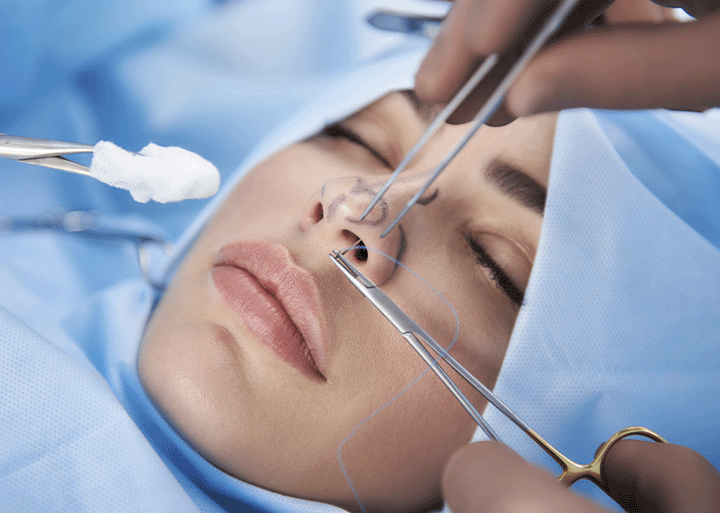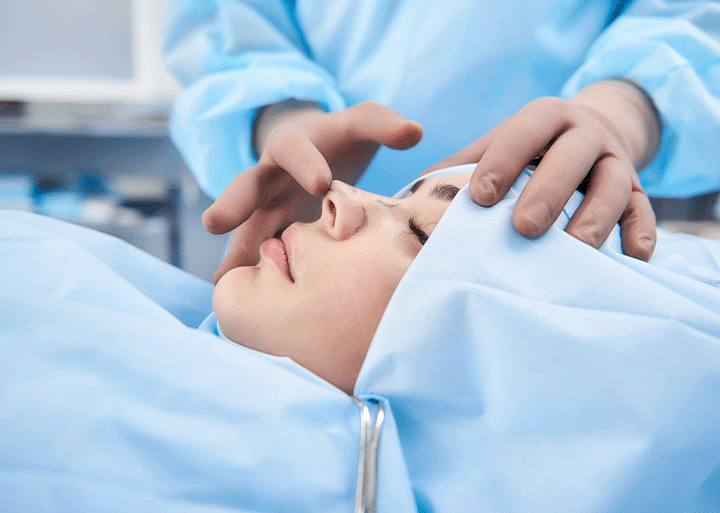
Some of the patients who are considering rhinoplasty are hesitant to use general anesthesia. This brings to mind the question of whether rhinoplasty surgery can be performed with local anesthesia.
General anesthesia is used in most rhinoplasty operations. It is possible to use local anesthesia in revision rhinoplasty surgeries, which take a very short time like 15-20 minutes, and consist of very small interventions. Likewise, non-surgical rhinoplasty procedures performed with fillers are also performed with local anesthesia. However, the most suitable type of anesthesia for a classical rhinoplasty surgery performed with an open technique is general anesthesia.
The main reason for this is to consider the comfort of the patient during the surgery. Rhinoplasty surgery, especially performed with open technique, is a major operation. The duration of the operation is usually 3-4 hours. Even the most cold-blooded patient cannot be expected to remain calm and not worry in an operation where such long and complicated procedures are performed. Even if no pain will be felt during the operation with the effect of local anesthesia, there is also a mental part of this job. Knowing that the skin of the nose is removed and the cartilage and tissues are removed is enough to make the patient uneasy. This causes the surgeon and his/her team to not be able to work comfortably.
In addition to all of these, the effect of local anesthesia may decrease in long-term rhinoplasty surgeries. In this case, it is necessary to renew local anesthesia. This procedure may be necessary more than once, which disrupts the flow of the surgery. Besides, it is very difficult for the patient to stay in the same position for so many hours. On the other hand, the patient is completely anesthetized and his/her breathing continues depending on the machine during general anesthesia. S/he does not feel any pain during the operation and does not remember anything about the operation when s/he wakes up. When the surgery is over, the patients have awakened again and are allowed to breathe spontaneously and leave the anesthesia machine.
When all these are taken into consideration, it is revealed that the most convenient anesthesia application for both the patient and the surgeon is general anesthesia.




